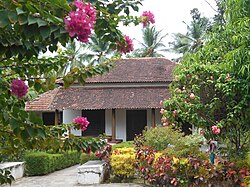withdrew to his camp. All this time the obstructions in the river, and the deficiency of boats, had kept Luiz da Gama a mere spectator of the scene, unable either to direct or to succour. We have, from de Couto, a picture of him standing knee-deep in the mud of the river bar, endeavouring to embark succours in the boats, while ever and anon his attempts thus to rally his forces were frustrated by the sight of the fugitives, some in boats, some swimming down the river, and all shouting, "Treason! Treason!" The body of the brave Luiz da Sylva had been got into a boat, wrapped in his flag, which a captain had torn from its standard, in order to conceal the fact of his fall. This manoeuvre, however, only added to the disorder of the soldiery, who found themselves of a sudden, and at the critical moment of the attack, without a competent leader and without colours. Thus ended the gravest disaster which had as yet befallen the Portuguese arms in India. De Couto gives a long list of noble fidalgos who fell that day, sacrificed by the incapacity of their leaders; and though he confidently asserts that the total loss was 230 men and no more, his own story of the events of the fight gives colour to the statement of Pyrard that the loss amounted to no less than 500 lives. It is further stated by de Couto, who talked the matter over with Kunhali and his lieutenant, Chinale, when they were in the Goa prison, that the loss of the besieged exceeded 500 men.
The sorrow and vexation of Luiz da Gama at the death of his brave captain and the miscarriage of the whole enterprise were unbounded. His next measures, however, were dictated by good sense and humanity. Leaving a small force to blockade the fort under Francisco de Sousa, and despatching the body of da Sylva to Cannanor, where it was temporarily interred with all available pomp,1 he withdrew his shattered forces to Cochin, where the wounded received attention at the hospital and in the houses of the citizens.
The blockading force was insufficient, and Kunhali, who had thirteen galeots ready for action in his port, might easily have forced a way to sea, had not de Sousa, by a skillful ruse, led him
It was afterwards conveyed to Portugal.




